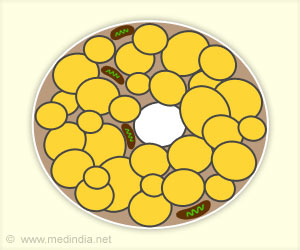Brown-fat-mediated tumor suppression by cold-altered global metabolism
- Activation of brown fat through cold exposure can reduce tumor growth by competing for circulating glucose supply in the tumor microenvironment
- Approaches to cutting off glucose supply, such as calorie-restricted diets, fasting, and metformin, have shown promising results in controlling tumor growth
- Brown fat has been linked to various health benefits, including a lower incidence of heart disease, diabetes, and high blood pressure
Brown adipose tissue is not associated with cachexia or increased mortality in a retrospective study of patients with cancer
Go to source).
Your Fat Could Combat Cancer
Cutting off glucose supply from the tumor microenvironment with methods like calorie-restricted diets, fasting, and metformin, have shown promising results in controlling tumor growth. The researchers found that cold acclimatization in mice led to improved survival, reduced tumor hypoxia, angiogenesis, and tumor cell proliferation, and replicated cold-induced tumor suppression in a range of transplanted tumors in mice.The researchers found that cold-induced brown adipose tissue (BAT) thermogenesis leads to tumor suppression by competing for the supply of circulating glucose. The study revealed a tumor-suppressive role of cold-induced BAT activation in animal models, and further research is needed to determine whether cold exposure could prevent, arrest, or even reverse cancer progression in humans.
Brown Fat has been Linked to an Array of Health Benefits in Humans
Brown fat has been linked to a variety of health benefits, including a lower incidence of heart disease, diabetes, and high blood pressure. Nonetheless, certain cancer research studies in mice imply that brown fat may cause cachexia. Researchers studied whether the same is true in humans.From June 2009 to March 2018, the research team studied over 14,000 participants aged 18 and up. In addition to other variables, people with multiple cancer diagnoses or unstageable malignancies were excluded. According to earlier research, more than 8,600 patients in this study were recognized as having cachexia based on body mass index and a previous cachexia diagnosis within 12 months of a cancer diagnosis.
Cachexia participants were more likely to be older and male, to have a higher percentage of weight loss, and to be current smokers. They were also more likely to describe themselves as Asian or Black. Finally, cachexia was more common in people with head and neck, brain, and upper gastrointestinal tract malignancies.
Cancer-Specific Connection of Brown Fat
The researchers found that people with brown fat had a "significantly lower prevalence of cachexia" than those without brown fat. The researchers examined tumor sites from 100 people with breast, bronchial, lung, and blood cancers who also had brown fat in their bodies to look for cancer-specific connections.Thus, it can be concluded that further research on brown fat can help in cancer treatment.
Reference
- Brown adipose tissue is not associated with cachexia or increased mortality in a retrospective study of patients with cancer - (https://journals.physiology.org/doi/abs/10.1152/ajpendo.00187.2022)
Source-Medindia















